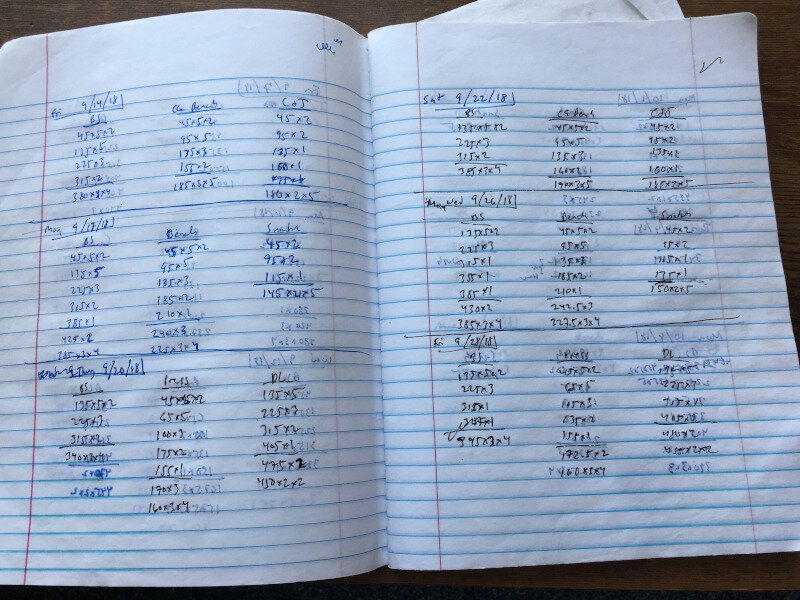Remember the golden rule of lifting notation, which is that the number of reps is always the second number written down - watch the included video if this is confusing.
Component #4: What You’re Going to Do Next
You squatted 235 lb today, and you successfully completed all of your work sets, so your next session will move to 240 lb, and thus, your training log looks like this now:
Squat
3 x 5
—-------
45 x 5 x 2
95 x 5 x 1
135 x 3 x 1
185 x 2 x 1
215 x 1 x 1
—-------
235 x 5 x 3
Next: 240
This would also be the time to note any upcoming programming changes. For example, perhaps you’re planning to squat 240 lb for a top set of 5 reps and then move on to 2 back-off sets of 5 reps - this “Next” section is the place to note it. Don’t walk out of the gym without writing this part down. Ever.
If you’re only performing one set at a given weight, the “1” at the end of the notation is optional. If you’d like to be a bit more concise, you can write it all out as shown below:
Squat
3 x 5
—-------
45 x 5 x 2
95 x 5
135 x 3
185 x 2
215 x 1
—-------
235 x 5 x 3
Next: 240





